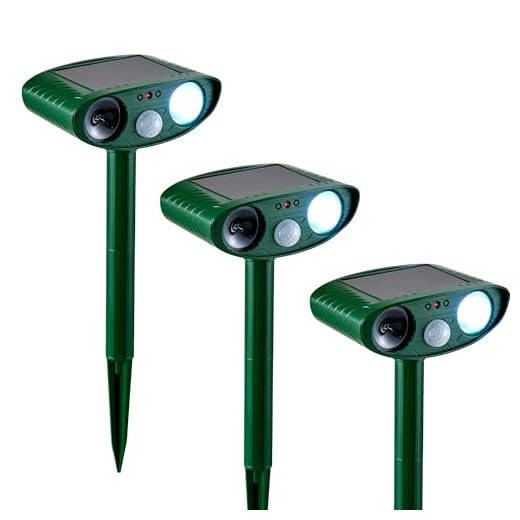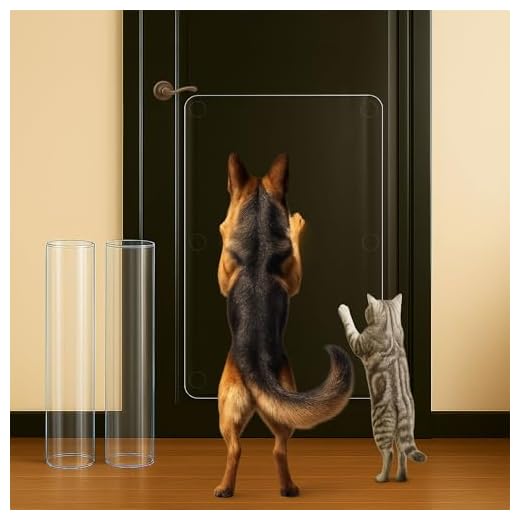



To deter furry friends from invading your electronic displays, consider creating designated spaces for play and relaxation. A cozy cat tree or a soft blanket nearby can redirect their attention and provide comfort away from your devices.
Utilizing physical barriers can also be beneficial. Simple solutions like placing your gadgets on elevated surfaces or using protective covers can significantly reduce the likelihood of curious paws tapping the screens.
Incorporating scent deterrents can be surprisingly effective. Citrus or certain herbal scents, like rosemary, are often unappealing to many felines. Spraying these around your workspace may discourage unwanted visits.
Engaging your furry companion with interactive toys can shift their focus. Toys that mimic prey or involve movement can keep them entertained, thus reducing their desire to explore your devices.
Establishing a routine can help as well. Regular playtime and attention will satisfy their needs for interaction, lessening their inclination to seek attention by hopping onto your screens.
Understanding Cat Behavior Around Screens
I find the flickering lights and moving images fascinating. This curiosity makes me want to explore every inch of the shiny surface. The warmth radiating from devices adds to my attraction, as I often seek out cozy spots. My instincts drive me to investigate anything that seems lively or engaging.
The reflection on the glass can be mesmerizing. I see my own face and sometimes a moving shadow that piques my interest. This behavior is rooted in my natural instincts as a hunter; the erratic movements simulate prey. When something catches my eye, my natural reaction is to pounce, regardless of the consequences.
Sound also plays a significant role. The beeping, clicking, and various tones can trigger my playful side. I’m drawn to those noises, thinking they might lead to something interesting. Keeping my focus on those sounds can lead to mischief, as you might imagine.
While I enjoy engaging with these devices, I also appreciate the attention they bring. I notice when my human spends hours focused on them, and I sometimes feel a bit neglected. Creating a balance between my playful antics and my human’s screen time is key. Providing alternative forms of entertainment can help redirect my energy and curiosity.
Understanding my behaviors can lead to a more harmonious environment. By recognizing my instincts and needs, my human can create a space that satisfies both my curiosity and their need for screen time. Play sessions with toys that mimic prey or creating cozy areas away from screens can help me feel included without disrupting their activities.
Creating Physical Barriers to Protect Screens
One effective way to deter feline curiosity is to establish barriers around your display units. Using furniture to block access can significantly reduce the chance of paws landing on the screen. For instance, place a bookshelf or a decorative piece in front of your monitor or television.
Screen Covers
Investing in protective screen covers can also be beneficial. These thin films act as shields, safeguarding your device from scratches and smudges caused by playful antics. They are easy to apply and remove, providing a seamless solution to maintaining your screen’s integrity.
Designated Play Areas
Creating a specific area for playtime keeps your furry friend engaged while steering clear of electronic devices. Cat trees, scratching posts, and interactive toys placed nearby can distract from the allure of the screen. Regularly rotating toys can maintain interest and encourage your companion to explore designated zones.
For more insights into peculiar behaviors, check this article on why does my cat coo like a pigeon.
Using Deterrents to Keep Felines Away
One of the simplest methods is to apply citrus-scented sprays around the area. Cats dislike the smell of citrus, so a few spritzes of lemon or orange scent can work wonders. Just ensure the spray is safe for surfaces and won’t damage the screen.
Another option involves using double-sided tape on the edges of the display. The sticky texture can deter most curious paws, as they dislike the sensation of being stuck.
Ultrasonic devices emit a sound that is unpleasant for many felines but inaudible to humans. Placing one near the screen can create an effective barrier without any mess.
Commercially available repellents, specifically designed for pets, can also be a viable choice. These products often come in various scents that are unappealing to my kind, giving you an extra layer of protection.
Crushed red pepper or cayenne sprinkled around the perimeter can act as a natural deterrent. However, be cautious to avoid any contact with eyes or sensitive areas.
Using motion-activated air canisters that release a puff of air when someone approaches can work well too. The sudden burst startles and discourages further interaction.
Finally, consider providing alternative entertainment options nearby. A cozy bed or a new toy can redirect attention away from the screen, making it less appealing to explore.
Redirecting Attention to Alternative Activities
Engaging in play with various toys diverts focus from screens. Consider the following options:
- Interactive Toys: Invest in feather wands or laser pointers. They stimulate hunting instincts and provide physical activity.
- Puzzle Feeders: These keep minds busy while also serving treats. It combines nourishment with entertainment.
- Cat Trees: Encourage climbing and scratching. A well-placed tree can attract attention away from devices.
- Hide and Seek: Play games that involve hiding treats or toys. This makes them work for their rewards.
Creating a Play Schedule
Establish a routine for playtime. Dedicate specific times each day to engage in activities. This consistency helps redirect energy and reduces the allure of screens.
Exploring Sensory Experiences
Introduce new scents or textures. Catnip-filled toys or crinkly materials can capture interest. Additionally, consider safe plants for exploration. For example, learn about are roses bad for cats to eat to ensure a safe environment.
By providing alternative engagements, attention shifts naturally, reducing the desire to interact with screens. Stay creative and observant to discover what captivates the feline mind the most.
To deter furry friends from invading your electronic displays, consider creating designated spaces for play and relaxation. A cozy cat tree or a soft blanket nearby can redirect their attention and provide comfort away from your devices.
Utilizing physical barriers can also be beneficial. Simple solutions like placing your gadgets on elevated surfaces or using protective covers can significantly reduce the likelihood of curious paws tapping the screens.
Incorporating scent deterrents can be surprisingly effective. Citrus or certain herbal scents, like rosemary, are often unappealing to many felines. Spraying these around your workspace may discourage unwanted visits.
Engaging your furry companion with interactive toys can shift their focus. Toys that mimic prey or involve movement can keep them entertained, thus reducing their desire to explore your devices.
Establishing a routine can help as well. Regular playtime and attention will satisfy their needs for interaction, lessening their inclination to seek attention by hopping onto your screens.
Understanding Cat Behavior Around Screens
I find the flickering lights and moving images fascinating. This curiosity makes me want to explore every inch of the shiny surface. The warmth radiating from devices adds to my attraction, as I often seek out cozy spots. My instincts drive me to investigate anything that seems lively or engaging.
The reflection on the glass can be mesmerizing. I see my own face and sometimes a moving shadow that piques my interest. This behavior is rooted in my natural instincts as a hunter; the erratic movements simulate prey. When something catches my eye, my natural reaction is to pounce, regardless of the consequences.
Sound also plays a significant role. The beeping, clicking, and various tones can trigger my playful side. I’m drawn to those noises, thinking they might lead to something interesting. Keeping my focus on those sounds can lead to mischief, as you might imagine.
While I enjoy engaging with these devices, I also appreciate the attention they bring. I notice when my human spends hours focused on them, and I sometimes feel a bit neglected. Creating a balance between my playful antics and my human’s screen time is key. Providing alternative forms of entertainment can help redirect my energy and curiosity.
Understanding my behaviors can lead to a more harmonious environment. By recognizing my instincts and needs, my human can create a space that satisfies both my curiosity and their need for screen time. Play sessions with toys that mimic prey or creating cozy areas away from screens can help me feel included without disrupting their activities.
Creating Physical Barriers to Protect Screens
One effective way to deter feline curiosity is to establish barriers around your display units. Using furniture to block access can significantly reduce the chance of paws landing on the screen. For instance, place a bookshelf or a decorative piece in front of your monitor or television.
Screen Covers
Investing in protective screen covers can also be beneficial. These thin films act as shields, safeguarding your device from scratches and smudges caused by playful antics. They are easy to apply and remove, providing a seamless solution to maintaining your screen’s integrity.
Designated Play Areas
Creating a specific area for playtime keeps your furry friend engaged while steering clear of electronic devices. Cat trees, scratching posts, and interactive toys placed nearby can distract from the allure of the screen. Regularly rotating toys can maintain interest and encourage your companion to explore designated zones.
For more insights into peculiar behaviors, check this article on why does my cat coo like a pigeon.
Using Deterrents to Keep Felines Away
One of the simplest methods is to apply citrus-scented sprays around the area. Cats dislike the smell of citrus, so a few spritzes of lemon or orange scent can work wonders. Just ensure the spray is safe for surfaces and won’t damage the screen.
Another option involves using double-sided tape on the edges of the display. The sticky texture can deter most curious paws, as they dislike the sensation of being stuck.
Ultrasonic devices emit a sound that is unpleasant for many felines but inaudible to humans. Placing one near the screen can create an effective barrier without any mess.
Commercially available repellents, specifically designed for pets, can also be a viable choice. These products often come in various scents that are unappealing to my kind, giving you an extra layer of protection.
Crushed red pepper or cayenne sprinkled around the perimeter can act as a natural deterrent. However, be cautious to avoid any contact with eyes or sensitive areas.
Using motion-activated air canisters that release a puff of air when someone approaches can work well too. The sudden burst startles and discourages further interaction.
Finally, consider providing alternative entertainment options nearby. A cozy bed or a new toy can redirect attention away from the screen, making it less appealing to explore.
Redirecting Attention to Alternative Activities
Engaging in play with various toys diverts focus from screens. Consider the following options:
- Interactive Toys: Invest in feather wands or laser pointers. They stimulate hunting instincts and provide physical activity.
- Puzzle Feeders: These keep minds busy while also serving treats. It combines nourishment with entertainment.
- Cat Trees: Encourage climbing and scratching. A well-placed tree can attract attention away from devices.
- Hide and Seek: Play games that involve hiding treats or toys. This makes them work for their rewards.
Creating a Play Schedule
Establish a routine for playtime. Dedicate specific times each day to engage in activities. This consistency helps redirect energy and reduces the allure of screens.
Exploring Sensory Experiences
Introduce new scents or textures. Catnip-filled toys or crinkly materials can capture interest. Additionally, consider safe plants for exploration. For example, learn about are roses bad for cats to eat to ensure a safe environment.
By providing alternative engagements, attention shifts naturally, reducing the desire to interact with screens. Stay creative and observant to discover what captivates the feline mind the most.
To deter furry friends from invading your electronic displays, consider creating designated spaces for play and relaxation. A cozy cat tree or a soft blanket nearby can redirect their attention and provide comfort away from your devices.
Utilizing physical barriers can also be beneficial. Simple solutions like placing your gadgets on elevated surfaces or using protective covers can significantly reduce the likelihood of curious paws tapping the screens.
Incorporating scent deterrents can be surprisingly effective. Citrus or certain herbal scents, like rosemary, are often unappealing to many felines. Spraying these around your workspace may discourage unwanted visits.
Engaging your furry companion with interactive toys can shift their focus. Toys that mimic prey or involve movement can keep them entertained, thus reducing their desire to explore your devices.
Establishing a routine can help as well. Regular playtime and attention will satisfy their needs for interaction, lessening their inclination to seek attention by hopping onto your screens.
Understanding Cat Behavior Around Screens
I find the flickering lights and moving images fascinating. This curiosity makes me want to explore every inch of the shiny surface. The warmth radiating from devices adds to my attraction, as I often seek out cozy spots. My instincts drive me to investigate anything that seems lively or engaging.
The reflection on the glass can be mesmerizing. I see my own face and sometimes a moving shadow that piques my interest. This behavior is rooted in my natural instincts as a hunter; the erratic movements simulate prey. When something catches my eye, my natural reaction is to pounce, regardless of the consequences.
Sound also plays a significant role. The beeping, clicking, and various tones can trigger my playful side. I’m drawn to those noises, thinking they might lead to something interesting. Keeping my focus on those sounds can lead to mischief, as you might imagine.
While I enjoy engaging with these devices, I also appreciate the attention they bring. I notice when my human spends hours focused on them, and I sometimes feel a bit neglected. Creating a balance between my playful antics and my human’s screen time is key. Providing alternative forms of entertainment can help redirect my energy and curiosity.
Understanding my behaviors can lead to a more harmonious environment. By recognizing my instincts and needs, my human can create a space that satisfies both my curiosity and their need for screen time. Play sessions with toys that mimic prey or creating cozy areas away from screens can help me feel included without disrupting their activities.
Creating Physical Barriers to Protect Screens
One effective way to deter feline curiosity is to establish barriers around your display units. Using furniture to block access can significantly reduce the chance of paws landing on the screen. For instance, place a bookshelf or a decorative piece in front of your monitor or television.
Screen Covers
Investing in protective screen covers can also be beneficial. These thin films act as shields, safeguarding your device from scratches and smudges caused by playful antics. They are easy to apply and remove, providing a seamless solution to maintaining your screen’s integrity.
Designated Play Areas
Creating a specific area for playtime keeps your furry friend engaged while steering clear of electronic devices. Cat trees, scratching posts, and interactive toys placed nearby can distract from the allure of the screen. Regularly rotating toys can maintain interest and encourage your companion to explore designated zones.
For more insights into peculiar behaviors, check this article on why does my cat coo like a pigeon.
Using Deterrents to Keep Felines Away
One of the simplest methods is to apply citrus-scented sprays around the area. Cats dislike the smell of citrus, so a few spritzes of lemon or orange scent can work wonders. Just ensure the spray is safe for surfaces and won’t damage the screen.
Another option involves using double-sided tape on the edges of the display. The sticky texture can deter most curious paws, as they dislike the sensation of being stuck.
Ultrasonic devices emit a sound that is unpleasant for many felines but inaudible to humans. Placing one near the screen can create an effective barrier without any mess.
Commercially available repellents, specifically designed for pets, can also be a viable choice. These products often come in various scents that are unappealing to my kind, giving you an extra layer of protection.
Crushed red pepper or cayenne sprinkled around the perimeter can act as a natural deterrent. However, be cautious to avoid any contact with eyes or sensitive areas.
Using motion-activated air canisters that release a puff of air when someone approaches can work well too. The sudden burst startles and discourages further interaction.
Finally, consider providing alternative entertainment options nearby. A cozy bed or a new toy can redirect attention away from the screen, making it less appealing to explore.
Redirecting Attention to Alternative Activities
Engaging in play with various toys diverts focus from screens. Consider the following options:
- Interactive Toys: Invest in feather wands or laser pointers. They stimulate hunting instincts and provide physical activity.
- Puzzle Feeders: These keep minds busy while also serving treats. It combines nourishment with entertainment.
- Cat Trees: Encourage climbing and scratching. A well-placed tree can attract attention away from devices.
- Hide and Seek: Play games that involve hiding treats or toys. This makes them work for their rewards.
Creating a Play Schedule
Establish a routine for playtime. Dedicate specific times each day to engage in activities. This consistency helps redirect energy and reduces the allure of screens.
Exploring Sensory Experiences
Introduce new scents or textures. Catnip-filled toys or crinkly materials can capture interest. Additionally, consider safe plants for exploration. For example, learn about are roses bad for cats to eat to ensure a safe environment.
By providing alternative engagements, attention shifts naturally, reducing the desire to interact with screens. Stay creative and observant to discover what captivates the feline mind the most.










